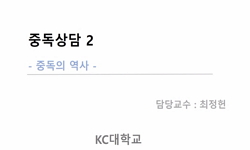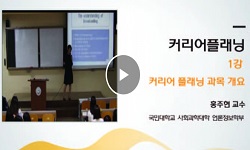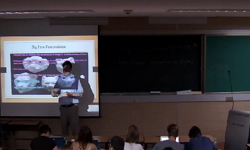Objective-Concerns over behavioral and emotional problems caused by excessive internet usage have been developed. This study intended to develop and a standardize questionnaire that can efficiently identify at-risk internet users through their interne...
http://chineseinput.net/에서 pinyin(병음)방식으로 중국어를 변환할 수 있습니다.
변환된 중국어를 복사하여 사용하시면 됩니다.
- 中文 을 입력하시려면 zhongwen을 입력하시고 space를누르시면됩니다.
- 北京 을 입력하시려면 beijing을 입력하시고 space를 누르시면 됩니다.
https://www.riss.kr/link?id=A105311384
-
저자
HanKyeong Lee (Department of Psychiatry, Depression Center, Sams) ; HaeWoo Lee (Department of Psychiatry, Seoul Medical Center, Seoul, Republic of Korea) ; JooHyun Han ; Subin Park ; SeokJin Ju ; Kwanwoo Choi ; JiHyeon Lee (Department of Internal Medicine, Samsung Medical Center, Sungkyunkwan University School of Medicine,) ; HongJin Jeon (Department of Psychiatry, Depression Center, Samsung Medical Center)

- 발행기관
- 학술지명
- 권호사항
-
발행연도
2018
-
작성언어
-
- 주제어
-
KDC
510
-
등재정보
KCI등재,SCIE,SSCI,SCOPUS
-
자료형태
학술저널
-
수록면
361-369(9쪽)
-
KCI 피인용횟수
1
- 제공처
-
0
상세조회 -
0
다운로드
부가정보
다국어 초록 (Multilingual Abstract)
Objective-Concerns over behavioral and emotional problems caused by excessive internet usage have been developed. This study intended to develop and a standardize questionnaire that can efficiently identify at-risk internet users through their internet usage habits.
Methods-Participants (n=158) were recruited at six I-will-centers located in Seoul, South Korea. From the initial 36 questionnaire item pool, 28 preliminary items were selected through expert evaluation and panel discussions. The construct validity, internal consistency, and concurrent validity were examined. We also conducted Receiver Operating Curve (ROC) analysis to assess diagnostic ability of the Internet Overuse Screening-Questionnaire (IOS-Q).
Results-The exploratory factor analysis yielded a five factor structure. Four factors with 17 items remained after items that had unclear factor loading were removed. The Cronbach’s alpha for the IOS-Q total score was 0.91, and test-retest reliability was 0.72. The correlation between Young’s internet addiction scale and K-scale supported concurrent validity. ROC analysis showed that the IOS-Q has superior diagnostic ability with the Area Under the Curve of 0.87. At the cut-off point of 25.5, the sensitivity was 0.93 and specificity was 0.86.
Conclusion-Overall, this study supports the use of IOS-Q for internet addiction research and for screening high-risk individuals.
목차 (Table of Contents)
- INTRODUCTION
- METHODS
- RESULTS
- DISCUSSION
- ACKNOWLEDGMENTS
- INTRODUCTION
- METHODS
- RESULTS
- DISCUSSION
- ACKNOWLEDGMENTS
- REFERENCES
참고문헌 (Reference)
1 김은정, "한국판 청소년 인터넷 중독 척도의 개발 및 타당화" 한국임상심리학회 22 (22): 125-139, 2003
2 Sin G, "Third Standardization of Korean Internet Addiction Proneness Scale" National Information Society Agency 2011
3 Cao F, "The relationship between impulsivity and Internet addiction in a sample of Chinese adolescents" 22 : 466-471, 2007
4 Hanley JA, "The meaning and use of the area under a receiver operating characteristic (ROC) curve" 143 : 29-36, 1982
5 Shotton MA, "The costs and benefits of 'computer addiction'" 10 : 219-230, 1991
6 Fanning P, "The Addiction Workbook: A Step-by-Step Guide to Quitting Alcohol & Drugs" New Harbinger Publications 1996
7 Dowling NA, "Screening for internet dependence: do the proposed diagnostic criteria differentiate normal from dependent internet use" 12 : 21-27, 2009
8 Ko CH, "Screening for internet addiction: an empirical study on cut-off points for the Chen Internet Addiction Scale" 21 : 545-551, 2005
9 Caplan SE, "Relations among loneliness, social anxiety, and problematic Internet use" 10 : 234-242, 2006
10 Hou H, "Reduced striatal dopamine transporters in people with internet addiction disorder" 2012 : 854524-, 2012
1 김은정, "한국판 청소년 인터넷 중독 척도의 개발 및 타당화" 한국임상심리학회 22 (22): 125-139, 2003
2 Sin G, "Third Standardization of Korean Internet Addiction Proneness Scale" National Information Society Agency 2011
3 Cao F, "The relationship between impulsivity and Internet addiction in a sample of Chinese adolescents" 22 : 466-471, 2007
4 Hanley JA, "The meaning and use of the area under a receiver operating characteristic (ROC) curve" 143 : 29-36, 1982
5 Shotton MA, "The costs and benefits of 'computer addiction'" 10 : 219-230, 1991
6 Fanning P, "The Addiction Workbook: A Step-by-Step Guide to Quitting Alcohol & Drugs" New Harbinger Publications 1996
7 Dowling NA, "Screening for internet dependence: do the proposed diagnostic criteria differentiate normal from dependent internet use" 12 : 21-27, 2009
8 Ko CH, "Screening for internet addiction: an empirical study on cut-off points for the Chen Internet Addiction Scale" 21 : 545-551, 2005
9 Caplan SE, "Relations among loneliness, social anxiety, and problematic Internet use" 10 : 234-242, 2006
10 Hou H, "Reduced striatal dopamine transporters in people with internet addiction disorder" 2012 : 854524-, 2012
11 Kumar R, "Receiver operating characteristic (ROC) curve for medical researchers" 48 : 277-287, 2011
12 Ko CH, "Psychiatric comorbidity of internet addiction in college students: an interview study" 13 : 147-153, 2008
13 Tao R, "Proposed diagnostic criteria for internet addiction" 105 : 556-564, 2010
14 Park SK, "Prevalence of Internet addiction and correlations with family factors among South Korean adolescents" 43 : 895-909, 2008
15 Ko CH, "Predictive values of psychiatric symptoms for internet addiction in adolescents: a 2-year prospective study" 163 : 937-943, 2009
16 Armstrong L, "Potential determinants of heavier Internet usage" 53 : 537-550, 2000
17 Seoul Mental Health Center, "Mental Health Screening Test Scale Book for Child and Adolescent Community Center" 2007
18 Murali V, "Lost online: an overview of internet addiction" 13 : 24-30, 2007
19 Block JJ, "Issues for DSM-V: Internet addiction" 165 : 306-307, 2008
20 Tsitsika A, "Internet use and misuse: a multivariate regression analysis of the predictive factors of internet use among Greek adolescents" 168 : 655-665, 2009
21 Choi K, "Internet overuse and excessive daytime sleepiness in adolescents" 63 : 455-462, 2009
22 Kaltiala-Heino R, "Internet addiction? Potentially problematic use of the Internet in a population of 12-18 year-old adolescents" 12 : 89-96, 2004
23 Young KS, "Internet addiction: the emergence of a new clinical disorder" 1 : 237-244, 1998
24 Fu KW, "Internet addiction: prevalence, discriminant validity and correlates among adolescents in Hong Kong" 196 : 486-492, 2010
25 Beard KW, "Internet addiction: a review of current assessment techniques and potential assessment questions" 8 : 7-14, 2005
26 Griffiths M, "Internet addiction: Internet fuels other addictions" 7 : 428-429, 1999
27 Griffiths M, "Internet addiction-time to be taken seriously?" 8 : 413-418, 2000
28 Weinstein A, "Internet addiction or excessive internet use" 36 : 277-283, 2010
29 Ko CH, "Factors predictive for incidence and remission of internet addiction in young adolescents: a prospective study" 10 : 545-551, 2007
30 Zwick WR, "Factors influencing four rules for determining the number of components to retain" 17 : 253-269, 1982
31 American Psychiatric Association, "Diagnostic and Statistical Manual of Mental Disorders: DSM-5 (5th Ed.)" 2013
32 Chen S, "Development of a Chinese Internet addiction scale and its psychometric study" 45 : 279-294, 2003
33 Shin K, "Development of Korean Smart Phone Addiction Proneness Scale for Youth and Adults" Korean National Information Society Agency 2011
34 Young J, "Common comorbidities seen in adolescents with attentiondeficit/hyperactivity disorder" 19 : 216-228, 2008
35 Scherer K, "College life on-line: healthy and unhealthy Internet use" 38 : 655-665, 1997
36 Black DW, "Clinical features, psychiatric comorbidity, and health-related quality of life in persons reporting compulsive computer use behavior" 60 : 839-844, 1999
37 Browne M, "CEFA: Comprehensive Exploratory Factor Analysis, Version 3.04 [Computer software and manual]" 2010
38 Griffiths M, "Behavioral addiction: an issue for everybody?" 8 : 19-25, 1996
39 Browne MW, "Alternative ways of assessing model fit" 21 : 230-258, 1992
40 Kim C, "A study on internet addiction counseling and the development of prevention programs" National IT Industrial Promotion Agency 2002
41 Lee S, "A study of Internet Addiction Proneness Scale for Adults" Addiction Prevention Team, Reverse Function Prevention Center, Korea Agency for Digital opportunity and Promotion 2005
42 Kaiser HF, "A second generation little jiffy" 35 : 401-415, 1970
43 Chou C, "A review of the research on Internet addiction" 17 : 363-388, 2005
44 Van Rooij A, "A critical review of Internet addiction criteria with suggestions for the future" 3 : 203-213, 2014
45 Griffiths M, "A 'components' model of addiction within a biopsychosocial framework" 10 : 191-197, 2005
46 Widyanto L, "'Internet addiction': a critical review" 4 : 31-51, 2006
동일학술지(권/호) 다른 논문
-
- 대한신경정신의학회
- HaeRan Na
- 2018
- KCI등재,SCIE,SSCI,SCOPUS
-
- 대한신경정신의학회
- Riyoung Na
- 2018
- KCI등재,SCIE,SSCI,SCOPUS
-
Modafinil Dependence: A Case with Attention-Deficit/Hyperactivity Disorder
- 대한신경정신의학회
- Huseyin Alacam
- 2018
- KCI등재,SCIE,SSCI,SCOPUS
-
Chasing the Chameleon: Psychogenic Paraparesis Responding to Non-Invasive Brain Stimulation
- 대한신경정신의학회
- Simona Portaro
- 2018
- KCI등재,SCIE,SSCI,SCOPUS
분석정보
인용정보 인용지수 설명보기
학술지 이력
| 연월일 | 이력구분 | 이력상세 | 등재구분 |
|---|---|---|---|
| 2023 | 평가예정 | 해외DB학술지평가 신청대상 (해외등재 학술지 평가) | |
| 2020-01-01 | 평가 | 등재학술지 유지 (해외등재 학술지 평가) |  |
| 2010-01-01 | 평가 | 등재학술지 선정 (등재후보2차) |  |
| 2009-01-01 | 평가 | 등재후보 1차 PASS (등재후보1차) |  |
| 2007-01-01 | 평가 | 등재후보학술지 선정 (신규평가) |  |
학술지 인용정보
| 기준연도 | WOS-KCI 통합IF(2년) | KCIF(2년) | KCIF(3년) |
|---|---|---|---|
| 2016 | 1.42 | 0.21 | 1.07 |
| KCIF(4년) | KCIF(5년) | 중심성지수(3년) | 즉시성지수 |
| 0.87 | 0.77 | 0.51 | 0.1 |







 ScienceON
ScienceON 스콜라
스콜라




